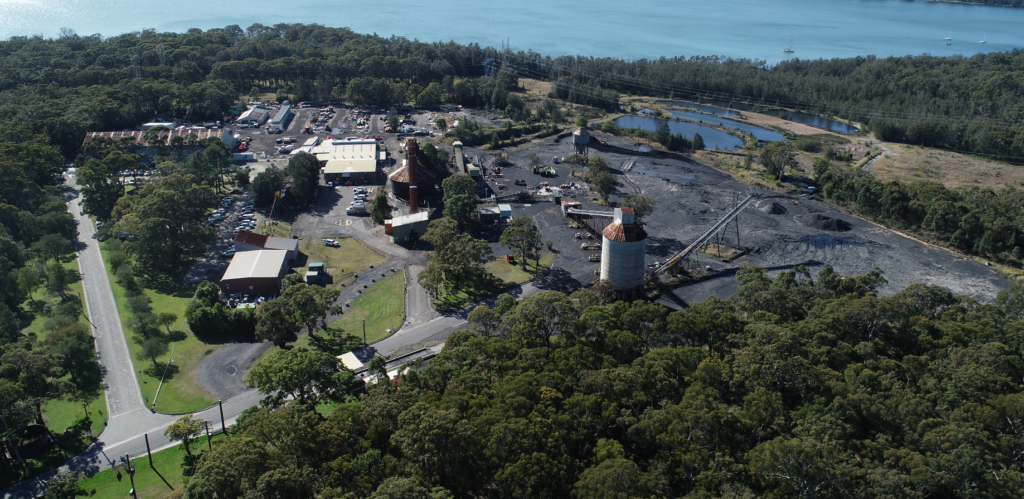The Hunter Community Environment Centre is calling for a rehabilitation fund of $20M per year from Lake Macquarie power stations to replace seagrass it claims has been damaged and killed by the operations of Vales Point and Eraring power stations.
HCEC wants $12M a year from Delta Electricity and $8M from Origin Energy (Eraring) to go into a Lake Macquarie Seagrass Trust to offset seagrass loss in Wyee and Myuna bays and to help restore seagrass meadows.
HCEC also wants fines issued by the Environment Protection Authority (EPA) increased ten-fold to $150,000.
These are two of seven recommendations in HCEC’s latest report – a 60-page “dirt file” scrutinising the practices of Delta Electricity and Delta Coal’s Chain Valley and Mannering collieries.
The report – Delta’s Dirty Deeds Done Dirt Cheap: the impacts of Vales Point power station on Lake Macquarie – reveals 57 breaches of environment protection since 2015, and presents new findings based on information sourced from the EPA Public Register, scientific literature, field investigations and regulatory documents obtained under laws for public access to government information (GIPA).
Vales Point power station is also being investigated by the EPA following two significant fish kills in 2022 at Mannering Park in Wyee Bay and a report on the outcome is expected to be made public in June.
The HCEC report says that Delta Electricity and Delta Coal breaches of environmental protection licence (EPL) conditions included illegal asbestos dumping, 11 relating to water pollution and coal ash dust pollution, failure to pass a 2016 EPL compliance audit, 23 individual breaches since Delta Coal took ownership of Chain Valley Colliery in 2019, contamination of heavy metals in off-site groundwater in 2021, and the near complete loss of seagrass in Wyee Bay due to excessive thermal pollution between 2005 and 2023.

HCEC says that compounding the effects of thermal pollution from the power station outlet on seagrass, marine species and water quality is the daily discharge of nutrients from effluent, metals/metalloids from ash dump waste as well as chlorine produced on-site to “de-foul” (ie. keep the outlet canal free of encrusted marine biota).
To our knowledge, the HCEC report says, the potential cumulative impacts of this cocktail of contaminants at the outlet canal have never been properly assessed by the EPA.
The HCEC is also calling for a Pollution Reduction Program and upgrade of power station procedures to reduce the amount of chlorine discharged into Wyee Bay.
Jo Lynch of the HCEC said that in addition to Delta’s non-compliances, the apparent cost-cutting approach taken by the management of an already outdated piece of infrastructure was seen to be exacerbating pollution and degrading the health of the lake.
“Water and sediment quality, copious marine species and seagrass are all facing the effects,” she said.
Lynch says the loss of seagrass in Wyee Bay due to excessive thermal pollution is estimated to total about 55ha and as GIPA documents reveal, arose from successive increases to Vales Point outlet temperature limits approved by NSW EPA between 2005 and 2016.
It is a significant loss from which seagrass has not yet recovered, according to the latest Seagrass Monitoring Project report, showing further declines over the period of 2021-2022.
Delta’s Company Secretary, Steve Gurney, strongly rejects the HCEC claims, saying they are misleading, lacking factual context and involve the select use of data to reach a conclusion favourable to HCEC’s objectives.
“Evidence of this is the claim that Delta Electricity and Delta Coal have breached their EPL for Total Suspended Solids (TSS) almost 50 times since taking ownership in 2015,” he said.
“These are almost entirely ‘technical breaches’ of the TSS limits, resulting from elevated levels of TSS within Lake Macquarie caused by events such as storm water runoff where the TSS of the lake water being drawn into Delta’s systems is higher than Delta’s licence limit.
“This means the return of lake water is naturally above the licence limit, despite there being no contribution by Vales Point to the overall TSS levels.
“Delta employs over 500 people in high quality jobs in the region, providing an essential service to the community.
“Delta operates the Vales Point Power Station in accordance with strict environmental licence conditions, with diligent oversight by the independent Environmental Protection Authority and makes extensive data available for public scrutiny.”
NSW Environment Protection Authority CEO Tony Chappel said the information and findings in the HCEC report was being considered and the EPA would continue to work with industry to improve environmental outcomes for all communities.
“We know the community expects high standards are met and we will ensure that Vales Point acts in line with its environmental responsibilities,” he said.
“We investigate all incidents and where breaches are found we take appropriate regulatory action.
“We continue to review and consider our regulatory approach for power stations, including Vales Point, within our legislative responsibility, by responding to new information, data, evidence and understanding of environmental risk.”
Under the terms of its licence, Delta Electricity must meet strict concentration limits that are designed to protect the environment and health of the community.
Delta is also required to undertake a range of activities including to implement a seagrass monitoring program and to address coal ash.
Chappel said the EPA was currently reviewing the seagrass monitoring report for 2021-2022 and the Coal Ash Repository water sampling plan.
The NSW Government’s response to the recommendations of the Public Works Committee Coal Ash Inquiry includes a project to monitor the environmental condition of Lake Macquarie to understand the impacts of coal ash on the environment.
Sue Murray


